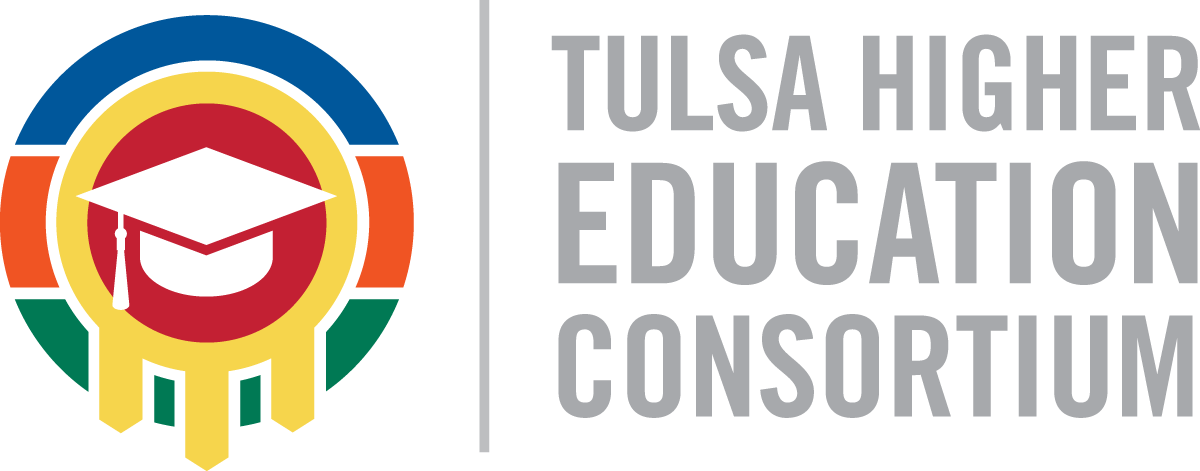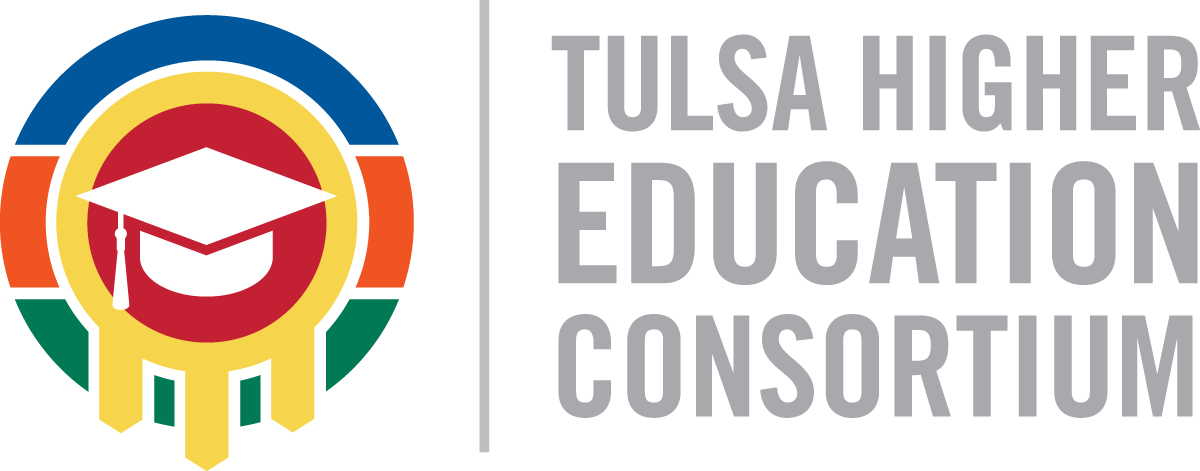By Laura Latta, Ph.D.
Executive Director, Tulsa Higher Education Consortium
“Competition makes us faster; collaboration makes us better.”
I stumbled upon this quote by an unknown author recently and it struck me so profoundly. This quote speaks to the nature of the Tulsa Higher Education Consortium, which is rooted in higher education collaboration. The Consortium is made up of seven Tulsa-area higher education institutions and business, civic, and philanthropic groups focused on supporting Tulsa students on their postsecondary journeys. The Tulsa Higher Education Consortium is the only consortium of its kind in the state of Oklahoma. Members of the consortium include:
Institutional Members:
- Langston University
- Northeastern State University
- Oklahoma State University- Tulsa
- University of Oklahoma- Tulsa
- Rogers State University
- Tulsa Community College
- University of Tulsa
Affiliate Members:
- City of Tulsa
- Tulsa Regional Chamber
- Broken Arrow Chamber of Commerce
- Oklahoma State Regents of Higher Education
- ImpactTulsa
- Tulsa Community Foundation
- Schusterman Family Philanthropies
In 2017, the foundation of the Consortium was laid through the work of the Tulsa Transfer Project. At the time, Oklahoma had a statewide transfer rate of 15%, meaning that only 15% of students who were going to community colleges across the state were successfully transferring to a bachelor-degree program. Local leaders realized that fewer successful transfers ultimately meant fewer bachelors degrees. Recognizing that many high-wage jobs require associates, bachelors, or masters degrees, this statistic was particularly alarming. In Tulsa, where residents are able to attend Tulsa Community College tuition free through the Tulsa Achieves program, aligning institutions and creating seamless transfer pathways (with zero credit loss) was critical. As a result of the Transfer Project, over 150 transfer pathways (and counting) have been established between institutions. To view these transfer maps, go to TCC’s Transfer page: https://www.tulsacc.edu/programs-courses/university-transfer . Students have more options than ever for earning a 4-year degree in Tulsa with seamless transfer and minimal credit loss largely due to the commitment of the seven Consortium institutions.
The Tulsa Higher Education Consortium was created by institutions and community organizations with the purpose of serving as a convener, connector, and communicator, bringing together institutions and supporting the type of innovation that can only come from cross-institutional collaboration. The task force of higher education, civic, philanthropic, and community leaders carefully crafted the Consortium’s mission to advance student learning, improve student success and degree completion, achieve equity in outcomes, and meet workforce needs by collaborating with business and industry to increase higher education opportunities in the region.
As the Executive Director of the Consortium, I have received the question, “Why should higher education institutions that so often exist in competition with one another come together and collaborate?” The answer to that question points back to the opening quote. Individually, institutions can accomplish quite a lot (see: impressive recruitment campaigns, institutional research endeavors, etc.). Together, however, institutions are able to multiply their efforts, share expertise, and innovate on a much larger scale than they can individually. Students benefit when institutions align around things like transfer pathways from one institution to another, with zero credit loss in the process (credit loss is a major roadblock to degree completion).
Together, we are able to rewrite the definition of competition vs. collaboration in higher education. One can see that in order for higher education in Tulsa to increase responsiveness and accessibility for students as well as relevance within Tulsa’s business and industry scene, collaboration is required. With all of these groups at the table and committed to supporting students, it will be far easier to open up lines of communication between degree programs and businesses looking to hire talented individuals. With more alignment between institutions, there is far greater possibility for cross-institutional research partnerships and ultimately, more innovation for our city. With Tulsa-area higher education institutions working together, and in alignment with business and industry, it will be easier to see how Tulsa-area students are faring in their postsecondary journeys. With this knowledge, barriers to access can be eliminated, best practices can be supported, and communication can occur where silence previously existed.
This type of collaboration will make Tulsa better, brighter, and more connected.

